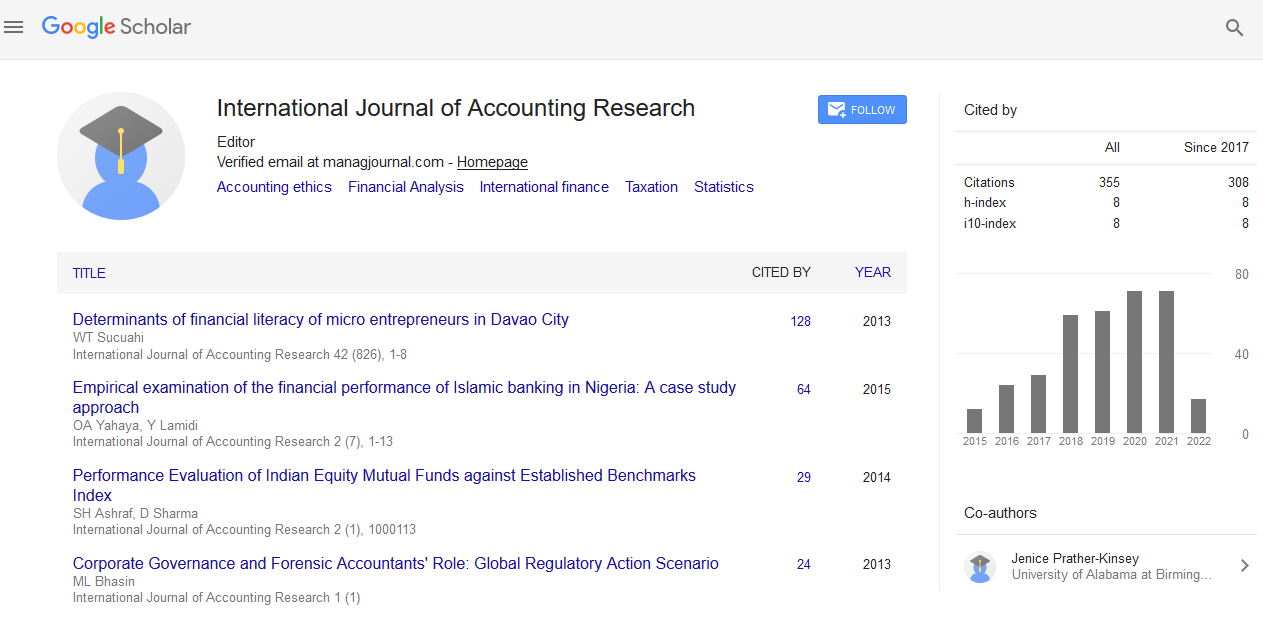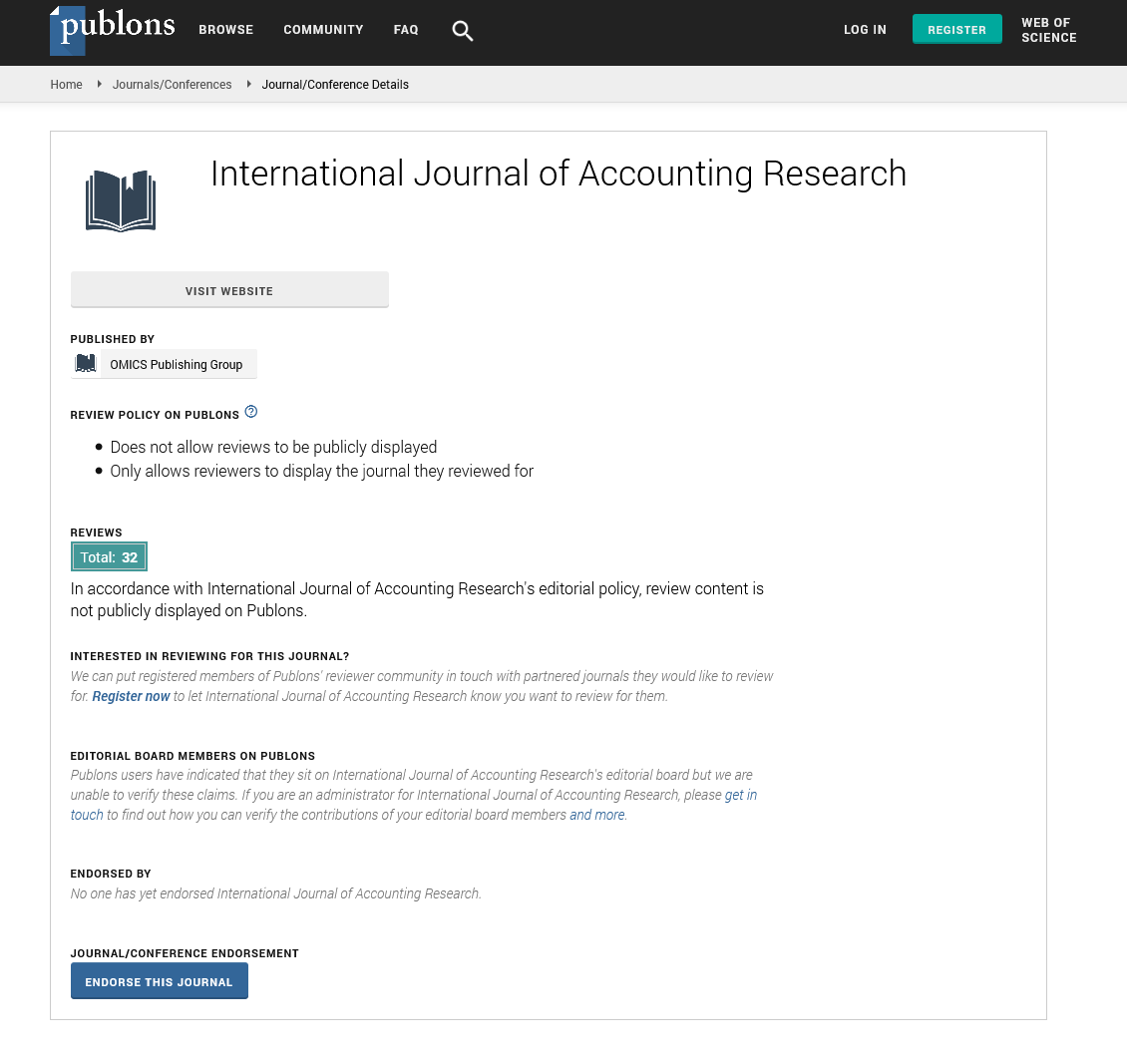Indexed In
- Open J Gate
- RefSeek
- Hamdard University
- EBSCO A-Z
- Scholarsteer
- Publons
- Euro Pub
- Google Scholar
Useful Links
Share This Page
Journal Flyer

Open Access Journals
- Agri and Aquaculture
- Biochemistry
- Bioinformatics & Systems Biology
- Business & Management
- Chemistry
- Clinical Sciences
- Engineering
- Food & Nutrition
- General Science
- Genetics & Molecular Biology
- Immunology & Microbiology
- Medical Sciences
- Neuroscience & Psychology
- Nursing & Health Care
- Pharmaceutical Sciences
Perspective - (2024) Volume 12, Issue 2
Technological Advancements and Digital Financial Models
Marian Radiguety*Received: 03-Jun-2024, Manuscript No. IJAR-24-26325; Editor assigned: 05-Jun-2024, Pre QC No. IJAR-24-26325 (PQ); Reviewed: 20-Jun-2024, QC No. IJAR-24-26325; Revised: 26-Jun-2024, Manuscript No. IJAR-24-26325 (R); Published: 05-Jul-2024, DOI: 10.35248/2472-114X.24.12.378
Description
Technical advancements and digital financial models investigates how current technical advancement has transformed financial services, particularly digital finance. Digital finance, which includes internet banking, mobile payments, and digital currencies, is transforming the financial environment by increasing accessibility, lowering transaction costs, and promoting financial inclusion. This study analyzes panel data from Chinese provinces to examine how digital financing effects regional innovation capacity.
The findings show that digital finance greatly enhances local innovation, particularly in countries with a large percentage of tertiary sector GDP and limited market development. Even after accounting for the spatial influence of surrounding regions' innovative capacities, digital finance remains an effective driver of regional innovation. The study emphasizes the need for more research into the mechanisms which digital finance may be utilized to encourage innovation, giving useful insights for policymakers seeking to exploit digital financial models for regional development and technological advancement.
However, there is a dearth of strong theoretical support for how digital money promotes regional innovation. Digital finance is a novel approach to financial services that has an impact on societal development. Additional research suggests that provinces with a higher share of the tertiary sector in the overall GDP and less market expansion are more positively influenced by digital finance on regional innovation potential. Even after accounting for the spatial role of neighboring provinces' innovation capacities, digital finance still has a significant impact on regional innovation capability. These findings urge for more investigation into how digital finance may be leveraged to improve regional innovation potential in a unique market or geographical environment.
In early 2020, the Standing Committee of the Political Bureau of the CPC Central Committee suggested accelerating the construction of new infrastructure, including 5G networks and services, while remaining committed to the concept of contemporary development. This tax policy idea has enormous historical implications for the advancement of digital finance. Under the new development paradigm, innovation is central to development and a driving force behind it, necessitating ongoing funding. However, due to technological advancements, certain economic processes are high risk, have long cycles, and are unpredictable.
Furthermore, there is a low level of regional and autonomous innovation consciousness. How to handle the regional innovation activity funding channels and finance scale lag problem is especially important given the region's overall innovation capability, over-reliance on technology introduction, and lack of vim and vitality in regional innovation. This study examines whether digital finance might enhance regional innovation levels in light of the current growing trend of digital finance, considers the relevant incentive framework and influencing variables, and draws a conclusion. The following features of this essay mostly reflect its innovation: To begin, unlike previous study that studied how traditional financial systems, such as capital markets and commercial banks, affect technology innovation.
A financial model for digital finance that investigates the impact of financial development on regional innovation and validates the potential trajectory of how digital finance might affect regional innovation, serving as a data supplement for the growth of high-quality digital finance in China divides the existing characteristics of China's digital finance into east-west dimensions and discovers a novel approach, which is quite innovative; Third, the identification of regional innovation capability and its impact on financial development.
Following a study of the literature, they conclude that additional study is required to completely understand how digital finance supports regional innovation. Several factors, in addition to digital banking, might indirectly stimulate regional innovation. In light of this, they explore the indirect influence of digital finance on regional innovation through both internal and external factors, as well as the incentive effect it has on regional innovation itself.
Citation: Radiguety M (2024) Technological Advancements and Digital Financial Models. Int J Account Res. 12:378.
Copyright: © 2024 Radiguety M. This is an open-access article distributed under the terms of the Creative Commons Attribution License, which permits unrestricted use, distribution, and reproduction in any medium, provided the original author and source are credited.


